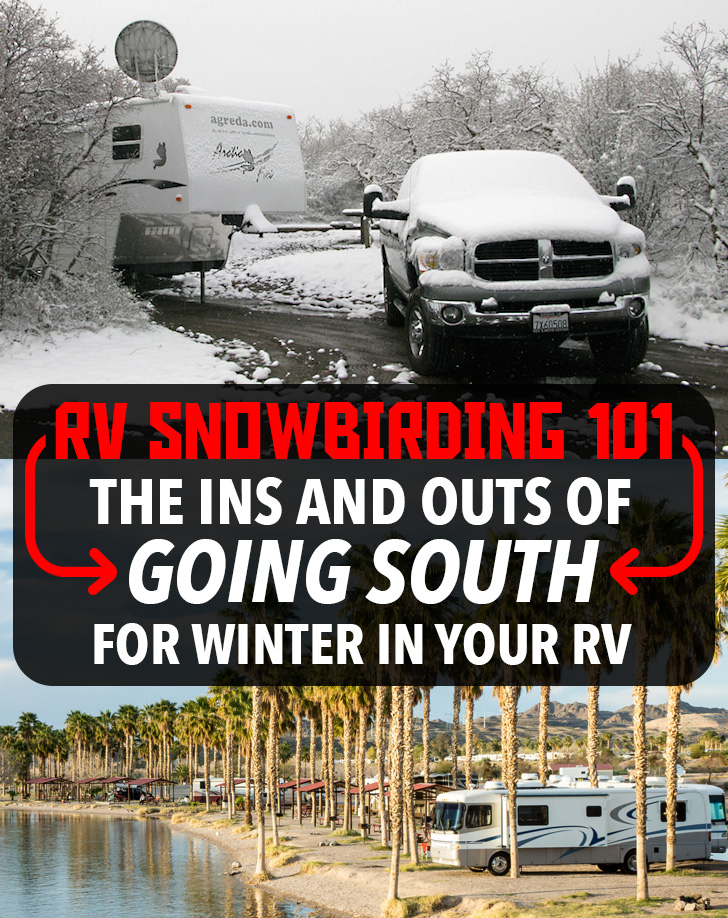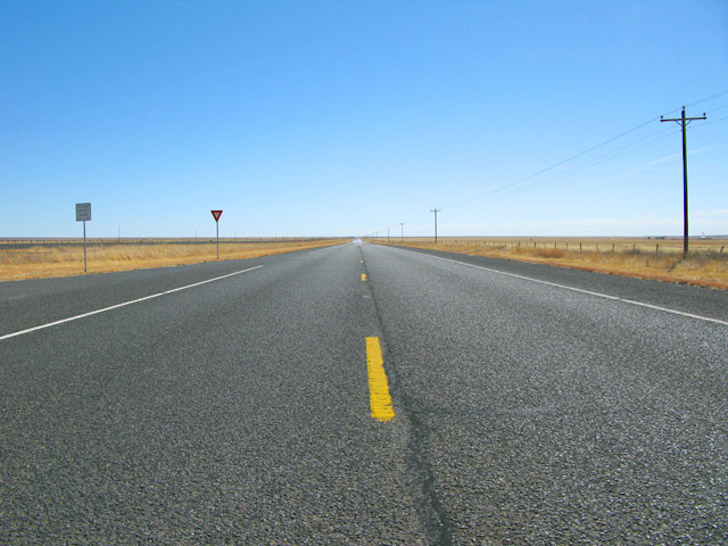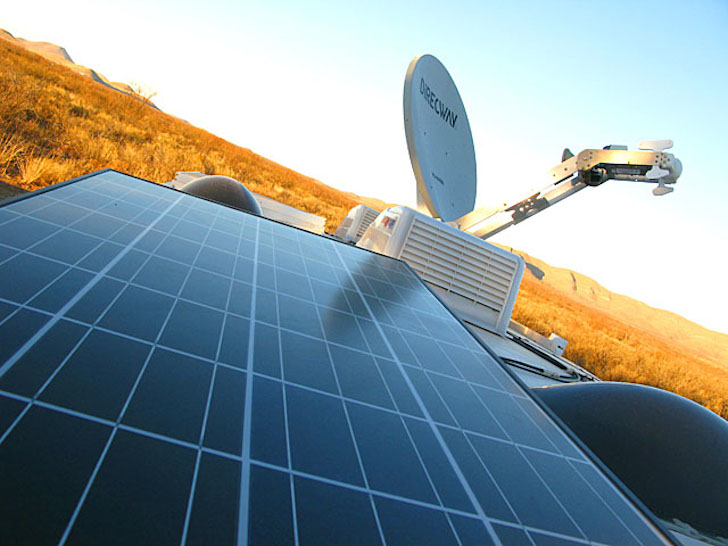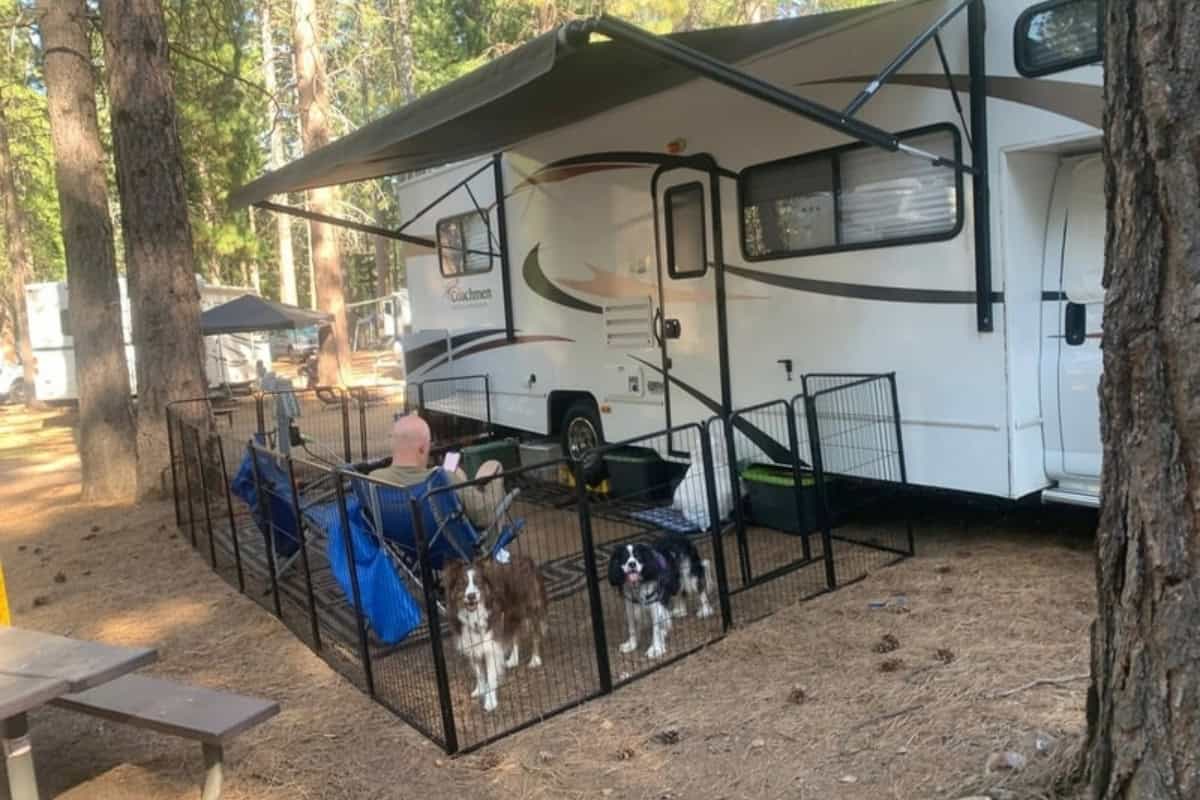
RV Snowbirding 101: The Ins And Outs Of Going South For Winter In Your RV
There’s nothing like having the ability to relocate your RV to more pleasant climates, especially during winter.
As the mercury drops and the weather maps turn various shades of ice blue, thousands of nomadic RVers like me will pack up and hit the road to escape from bitter temperatures and long, dark winter days.
Some of us will migrate vast distances spanning all of North America, while many of my vagabond cohorts will only move a few states away to enjoy sunnier, warmer days.
The RV snowbird lifestyle varies greatly depending on your ultimate destination. In this article, I’ll show you how to be a savvy RV snowbird.
You’ll learn things like:
- what’s a “Snowbird”?
- where do snowbirds go during winter?
- the differences between wintering in the East and West
- best places to spend winter in your RV
- how to prepare yourself, your finances and your RV for the snowbird lifestyle
- where to go for more information about RV snowbirds
Who are RV snowbirds?
RV snowbirds comprise three different species of winter travelers:
- Northern residents who pack up their main residence, hop into their RV and temporarily relocate to a second home, vacation rental, or rented RV spot in a Sun Belt state.
- Full-time RVers who follow the sun to warmer states during winter to avoid dealing with winter’s wrath on RV house systems like plumbing and heating.
- Seasonal “workampers” who relocate their RV to areas where work is more plentiful and tolerable, such as gate guarding jobs in Texas and Amazon warehouse fulfillment jobs throughout the West.
The most common demographic of RV snowbirds consist of retirees from Canada and the U.S.
But a smaller, fast-growing segment of younger, working-age full-time RVers is hitting the road in larger numbers each year.
As more of us discover the benefits of working from the road, either for ourselves or as seasonal employees, the ability to move our home to follow good weather is more attractive than ever.
Thanks to a growing number of full-time RVing support groups, location independent entrepreneur resources and RV communities created to help full-time RV families get and stay on the road, the word is out that escaping winter is easy if you can take your home and your work on the road.
Where do RV snowbirds travel?
RV snowbirds share much in common with one another but the locations where we choose to spend winter reflects our individual lifestyle choices and budget requirements.
Fleeing winter in the Eastern half of the U.S. is vastly different than waiting it out in the West.
So before you decide which way to point your RV, consider the pros and cons of relocating to these areas.
Should you head to the coast or the desert?
Many people don’t realize that to escape cold temperatures during winter, you have to head pretty far south—even New Mexico is exceptionally chilly.
As an RV snowbird, your winter migration route will mostly be limited to two geographies:
Coastal areas found in popular Southeast destinations like:
- Myrtle Beach, South Carolina
- Florida’s Atlantic and Gulf Coasts
- Gulf Coast States like Alabama, Mississippi, and Texas
Desert landscapes in the West including:
- Southern California, Arizona and New Mexico
- The Big Bend region of Texas
- Texas Hill Country RV parks
RV park selections in any snowbird destination can range from no-frills discount parks that don’t even have a coin-op laundromat, to high-end luxury accommodations with a country club atmosphere.
Many parks offer social activities that reunite long-time friends who return to the same parks every year.
In any location, monthly RV park stays are always cheaper than daily and weekly visits, while in many places you can save even more by committing to stay for the whole season.
Another great option for many people who don’t change locations very often is a Thousand Trails membership. For one lump sum and annual dues, Thousand Trails members have unlimited access to free and steeply discounted long-term camping at over 100,000 private RV parks in North America.
Your overall experience at any destination will depend on your preferred environment and what you can afford to pay. If cheap RV living is your goal and you head west to dry camp on free public lands during most of your stay, you’ll save a lot of money on camping fees but you’ll also endure some unpleasant trade-offs, which I’ll describe shortly.
Also keep in mind that in the West, boondocking etiquette means allowing lots of elbow room between individual camps: camping directly next to another RVer you don’t know is frowned upon. When you choose a campsite, remember that the desert is a big place with plenty of elbow room for everyone.
Make a break for Mexico?
If you’re up for an adventure that’s beyond what most North American RVers are willing to experience, fly south with the thousands of international RVers who head to Mexico, which offers the warmest winter weather and extremely cheap camping accommodations.
Most travelers will arrive in Mexico with an RV caravan tour, while a few brave souls will find a good destination on their own.
Deciding to travel outside the U.S. brings up many other considerations like fuel costs, personal security, vehicle and health insurance, tourist visas and more.
A Mexico snowbird adventure requires lots of advance planning that won’t be covered in this article, but if you head on over to Mexico Mike you can learn about RVing in Mexico from the web’s biggest authority on the subject.
How to choose a snowbird getaway
Every North American snowbird destination has pros and cons. For example, during winter the Southeast enjoys a humid, warm tropical climate, but in return for that shorts and sandals weather, you will get to deal with humidity, flying cockroaches, and fire ants.
On the other hand, Western snowbirds will pay for sunny afternoons with prickly plants, wind storms, dust and frigid nighttime temperatures.
Before choosing a destination, consider the type of climate and landscapes you enjoy as well as the environmental conditions you are most and least willing to tolerate. Some important factors to consider include:
Decide if you’re a people person or a hermit
Ask yourself: how many or how few people you want to be around? Do you enjoy the constant camaraderie of other RVers or is solitude and quiet more your speed? Each experience comes with its own benefits and drawbacks that affect everything from the proximity of your neighbors, to itinerary planning, to how much it costs for your RV campsite.

In the Southeast, the sheer density of the snowbird population means that favorite destinations like Florida are packed by long-term visitors.
Choosing to winter in the Southeast requires you to make lodging plans at least a few months ahead of your arrival date. Public lands are nearly non-existent, which rules out cheap boondocking, while even the most no-frills RV parks will fill up far in advance of the winter season, forcing you to abandon any thoughts of a carefree itinerary.
Before committing to an arrival date, do your homework about the park and its surroundings. If you end up hating it, the odds of being able to relocate to another park are slim to none.
In the West, you’ll have the freedom to roam and you’ll enjoy more wide open spaces, fewer people and lower camping prices than parks in the Southeast.
In most locations like Arizona and Southern California, you’ll have the ability to change scenery as often as you like – from setting up a free campsite in isolated desert lands one week, to relocating to popular resort areas like Tucson and Palm Springs the next.
And although some busy snowbird areas like the Texas Hill Country can get overwhelmed with “Winter Texans,” you’ll usually have a good chance of landing a nice RV site even if you arrive without reservations.
What trade-offs can you endure?
In the Southeast, RV snowbirding is easy once you find a good place that you can afford. You simply pull into the park and plug in, there’s nothing more to think about other than happy hour and pickleball.
Social activities are plentiful and you’ll need lots of sunscreen since that warm weather will encourage you to stay outdoors. In addition, you’ll find lots of winter farmers’ markets in Florida. Once you’ve settled in for the duration, finding your groove is easy, but life isn’t ever that simple – is it?
In exchange for that exceptionally comfortable Southeast snowbird lifestyle you may encounter these trade-offs during your stay:
- Lack of privacy
- Many dog breed restrictions
- Few dog-friendly areas
- Smaller RV spaces
- Challenging RV parking conditions
- Congested campgrounds
- Higher prices for everything from rent to food to RV repairs.
If you choose to head to the Southeast, your daily cost of living will be higher, so prepare your RV travel finances well in advance of your arrival.
In the Southwest, you can also settle into a routine if you don’t particularly enjoy roaming. Adventure is always there for the taking and it’s cheap too. You can move to another park or head out into Bureau of Land Management (BLM) dispersed camping areas that offer free or low-cost camping.
In exchange for this freedom, you must be more self-reliant, adventurous, tolerant of changing environmental conditions and comfortable with off-grid living. Some things you can expect to experience while waiting out winter in the west include:
- Dump station and water fill-up fees
- Vast distances between fuel, shopping, and services (for example in Quartzsite, where thousands of RVers descend each winter, there’s only one bank and one post office and waits can be extremely long)
- Limited amenities like grocery stores and pharmacies
- Illicit activity on the Mexican border
- Border patrol and agricultural inspection stops
- Wind and dust
- Cold nighttime temperatures
- Desert animals, insects and thorny plants (a hazard to pets)
- A cash-only economy
- Limited cell and Internet connectivity
If you head West for winter your cost of living will be lower but your RV should be well-built enough to withstand harsh desert weather.
RV snowbirding with solar power
If you plan on extended boondocking out West, a good RV solar power system is a wise investment. It pays to learn about investing in a good RV solar power system long before you hit the road.
RV solar power needs vary from camper to camper so you’ll need to study your power consumption habits to size up your system. In general, it can be beneficial to buy a slightly larger one than you think you’ll need in order to prepare for unexpected power needs, like extended furnace use during cold snaps.

A reliable, quiet generator is also a must since there will be occasions when the sun doesn’t shine long enough to keep you powered up. Your neighbors will thank you for buying a super quiet generator like a Honda EU. And installing an exhaust extender if you drive a Class A motorhome.
If a DIY RV solar power system isn’t something you’re comfortable installing, you can always head out West without a system and talk to the many popular RV solar experts who are ready to help figure out what kind of power you need. Some recommended vendors include:
Before you go: How to prepare for RV snowbirding
Escaping to a warmer winter climate doesn’t necessarily mean that you’ll always be in t-shirts and flip flops. Depending on your departure date from the Northern latitudes, you can be subjected to everything from snow to freezing fog on your way south for winter or on your springtime return trip.
Once you arrive at your winter destination, it’s not uncommon to experience occasional wild temperature shifts – sometimes a region can plunge from daytime temps in the 80s down into the 50s almost overnight.
No matter where you go, random deep freezes are always a possibility so keep this in mind when packing your clothes and outfitting your RV to survive freezing temperatures.
If you’re the type of RVer who enjoys tempting fate by putting off a departure date until late Fall, consider leaving your rig winterized until you hit the road to avoid sudden damage by unexpected cold snaps.
RV snowbirds who own property need to tie up loose ends long before their departure date:
- What will you do about your mail? Will you use a mail forwarding service for RVers or have a relative or friend take care of it for you?
- Your house will also need someone to look after it. Can you hire someone to stop by and check for things like fallen trees and security?
- Will you winterize your home or leave all systems running and hope for the best?
Also, Canadian RV snowbirds will need to deal with extra international travel duties like Visa fees and length of stay deadlines, extended health insurance that provides coverage in the United States, international cell and Internet service, and budgeting for extensive fuel costs while heading south and when returning to Canada.
All RVers who fly south for winter will need to take care of details like:
- Packing just enough clothing and gear to be comfortable in cold temperatures
- Verifying that health insurance coverage is available along your route and geographic target
- Internet and cell connectivity availability
- Ensuring that you’ve budgeted enough money for the trip south and back
- Performing comprehensive maintenance on your RV and associated vehicles, including inspecting your tires and checking the voltage on your house batteries.
Resources for snowbirding
Jumping into your RV to head south for winter is easy, but as you’ve learned, a successful snowbirding experience requires some advance planning and research. Be sure to research your snowbird destinations on RV LIFE Campgrounds, and plan your trip with RV LIFE Trip Wizard and the RV LIFE App with RV-Safe GPS.




Oh my what a discouraging little report on the hurdles and difficulties of ‘snow birding’ something we have not done and after reading your article we will probably not ever do. Preferring to stay in our cosy but frozen home. Thanks for the warning.
LK